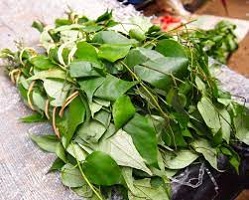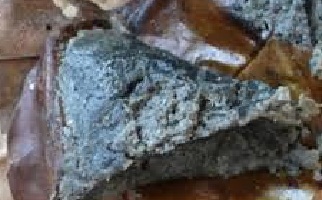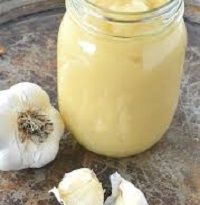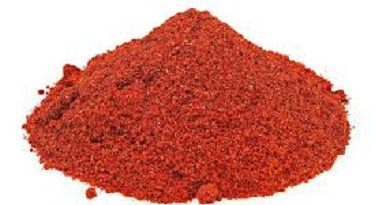What is Uziza? Everything to know (Leaf and Seed) and More
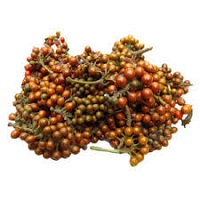
What is Uziza? Everything to know (Leaf and Seed) and More
- Have You Heard of Uziza Leaf and Seed?
What is Uziza?
Uziza is an African plant that has two parts: leaves and berries, which are known as the SEED (Piper Guineese)
The spicy leaves are pale green while fresh, darker green when frozen, dried, or powdered and dried, and have a peppery flavor.
Uziza seeds are the most common name for uziza fruits, while the leaves are used to spice up a dish.
What precisely is the Uziza seed?
Seed of Uziza (piper guineense)
This spice is used in a number of traditional West African cuisines, particularly in Nigeria. Above all, the seed imparts a distinct aroma and flavor to foods.
Uziza, also known as Ashanti pepper, Benin pepper, Cubeb, Soro wisa, Guinea cubed, and other names, is an earthy pepper.
What Is Uziza Leaves?
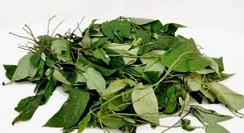
Uziza Leaves (Cubeb Pepper, Piper guineense).
Both the seeds and leaves of this plant, also known as ‘Hot Leaf,’ are used in cooking.
The former has a flavor similar to black peppercorns and should be ground before using in soups and stews.
Uziza’s Common Names
Traditional names for Uziza leaves and seeds include Uziza among the Igbo, Iyere among the Yoruba, Uda in Hausa, Etinkene among the Efik and Ibibio tribes, and Ebe-ahinhi akpoke among the Edo tribes.
Benin pepper, Guinea pepper, and fake cubeb are some of the other frequent names for this pepper, which is employed for culinary, medicinal, cosmetic, and insecticidal uses.
What is the English name for Uziza seed?
Piper guineense is the English name for Uziza seed; in Yoruba, Uziza seed is known as Iyere. Uziza, also known as Ashanti pepper or Benin pepper, Guinea cubed, Cubeb, Soro wisa, and other names.
It does, however, have a high pungency peak, and the flavor is robust and distinct.
What is the English name for Uziza leaf? What is the name of the Uziza leaf in English?
Sometimes known as Ashanti pepper or West African black pepper.
It’s a traditional African medicinal herb with a long history of use. Scientifically known as Piper guineense. Uziza is the Igbo name for the plant Piper guineense.
Is Uziza seed the same as black pepper? What is black pepper’s Igbo name?
Black pepper, often known as black peppercorns, is a dried fruit of the flowering piper vine that has been extensively studied.
It is also known as West African Black pepper, Benin pepper, Uziza seeds (Igbo), Ashanti pepper, fake cubeb, and Masoro.
It is well recognized for the piperine it contains, which is responsible for its intense heat.
Is black pepper the same as alligator pepper?
It is often described as a slightly more complex version of black pepper but without all its intensity.
In addition to its peppery flavor, alligator pepper also has flavors and aromas reminiscent of cardamom and clove
In the Igbo Language, how do you call peppercorn? What Are Peppercorns?
Peppercorns are the berries of Piper nigrum, a flowering plant in the Piperaceae family.
Piperaceae includes Piper guineense, also known as iyere in Yoruba and uziza in Igbo.
Ashanti pepper, Benin pepper, West African pepper, and even black pepper are all names for the fruit of this shrub.
What is Uziza used for?
The glossy leaves (false cubeb leaves): have a “spicy smell.” Pepper soup, Gi Nmiri Oku (yam pepper soup), egusi soup, Ofe Nsala, Ogbono soup, and Oha/Ora soup are some of the most popular dishes made with it.
The peppery leaves are pale green when fresh and darker green when frozen, ground, or dried.
It is mostly consumed in the eastern part of Nigeria
After childbirth, women use it to evacuate retained materials from the womb.
According to studies, the leaf and seeds have a lot of potential in the treatment and control of a variety of ailments in the body. For an example:
- Malaria prevention and treatment
- It helps to reduce blood pressure.
- Keeps diabetes under control.
- It helps to keep blood pressure in check.
- Helps with fertility, particularly ovulation in women and penile erections in males
- It relieves menstruation cramps and stomach aches.
- Aids in the prevention of cancer
- Boosts your blood count
- It helps to avoid constipation.
- It aids in the treatment of diarrhea and the relief of flatulence.
- Uziza leaves can also be used to keep mosquitoes at bay.
- It’s used to treat rheumatism.
- Appetite stimulation.
- Cough relief
- Reduce your weight
- Assist in the postpartum healing
- Dysentery should be treated.
How Is Uziza Leaves and Seed Used
- Prepare a broth with the leaves and seed to appreciate this plant.
- When the leaves are fresh, they can be used to cook any meal by washing and shredding them first, then adding them to the food around 15 minutes before removing them from the fire, or they can be dried, powdered, and then added to the meal.
- The leaves are typically taken as a tea for medical purposes by boiling the fresh leaves and consuming the water as herbal tea.
- Thinly chop the leaves and seeds and encapsulate them as a daily health supplement.
- You can grind the leaves and place them in a dish with clean boiling water.
- Add the dried and crushed leaves and seed to your salad as well. The uziza leaves can also be used in stir-frying or green salads.
Pregnancy and the uziza leaf
The leaves are widely taken as a tea for medical purposes. Similarly, the leaves are frequently crushed and capsuled for use as a daily health supplement.
Pregnant ladies can consume Uziza because it is quite safe. If at all feasible, recommend UZIZA leaf and seed to all tribes for all types of soups.
Is Uziza Leaf Good for Fertility? Fertility and the Uziza leaf
Enhances Fertility
The leaves and seed are homeopathic remedy that is used to treat infertility. It can be used to treat infertility in both men and women when mixed with honey; it can also help men with low sperm counts.
What is the nutritional value?
Uziza (248.37 mg/100g and 32.26 mg/100g) leaf exhibited considerably higher vitamin C and vitamin E contents than scent leaves (197.35 mg/100g and 31.46 mg/100g), which were statistically different (p<0.05).
Is it possible to lose weight by eating the seed? Is Uziza seed good for weight loss?
Each of these spices is beneficial to one’s health in some way.
Regularly adding ehuru, uda, or Uziza seeds to your meals for fertility and weight reduction not only adds flavor to your meals but also provides modest quantities of antioxidants and nutrients that can protect your health, especially for nursing mothers.
What’s the connection between uziza leaf and ulcer? Which Leaf is Beneficial in the Treatment of Ulcers?
Carica papaya L. (40%) (Caricaceae), Zingiber officinale Roscoe (27%), Musa paradisiaca L. (40%) (Musaceae), and Allium sativum L. (20%) were the most commonly used plant species for the treatment of peptic ulcer (Amaryllidaceae).
Uziza leaf soup – soup made with the eaves or seed
The leaves and seeds of the Uziza plant offer medicinal and nutritional properties, as well as several health benefits.
During your menstruation, drink it on a regular basis. In ogbono and egusi soups, the leaves are used whole or crushed.
What role does Uziza Leaf have in the human body? Functions
The leaves is high in roughages, which might aid with stomach pains and menstrual cramps. The spice is high in dietary fiber, which aids in constipation prevention.
The spicy leaves are pale green while fresh, darker green when frozen, dried, or powdered and dried, and have a peppery flavor.
What are the benefits of Uziza leaves?
The 6 Health Benefits include:
- It has anti-inflammatory properties – Diseases including diabetes, heart disease, and cancer are caused by free radicals and inflammation.
- Helps with digestion.
- Assists in weight loss
- It’s a natural pain reliever
- Helps to induce uterine contractions after childbirth
- Helps with colds and coughs
What is the best way to clean uziza leaves?
To kill bacteria, wash the leaves in saltwater before rinsing with clean water.
Recipe for Uziza Soup
- Firstly, in a cooking saucepan, wash the meat and stockfish, and season with onion, salt, and cube seasoning.
- Meanwhile, for the stock to come out, add a tiny cup of water and cover it to steam on the stove for 20 minutes.
- Then, cook for one hour with the amount of water needed to make the desired quantity.
- You can also add washed dry fish, chili pepper, crayfish, Ghana pepper, and locust beans (Iru). Cover and cook for 30 minutes.
- Cover for 10 -15 minutes after adding Achi (thickener). Season with salt to taste.
- Now, stir in the leaves that have already been chopped and rinsed. Lastly, cover and set aside for not more than two minutes.
So, there you have it! The soup is ready to eat.
What to Serve with
Eba, fufu, starch, pounded yam, or anything you choose is the best accompaniments.
The flavor is irresistible.
